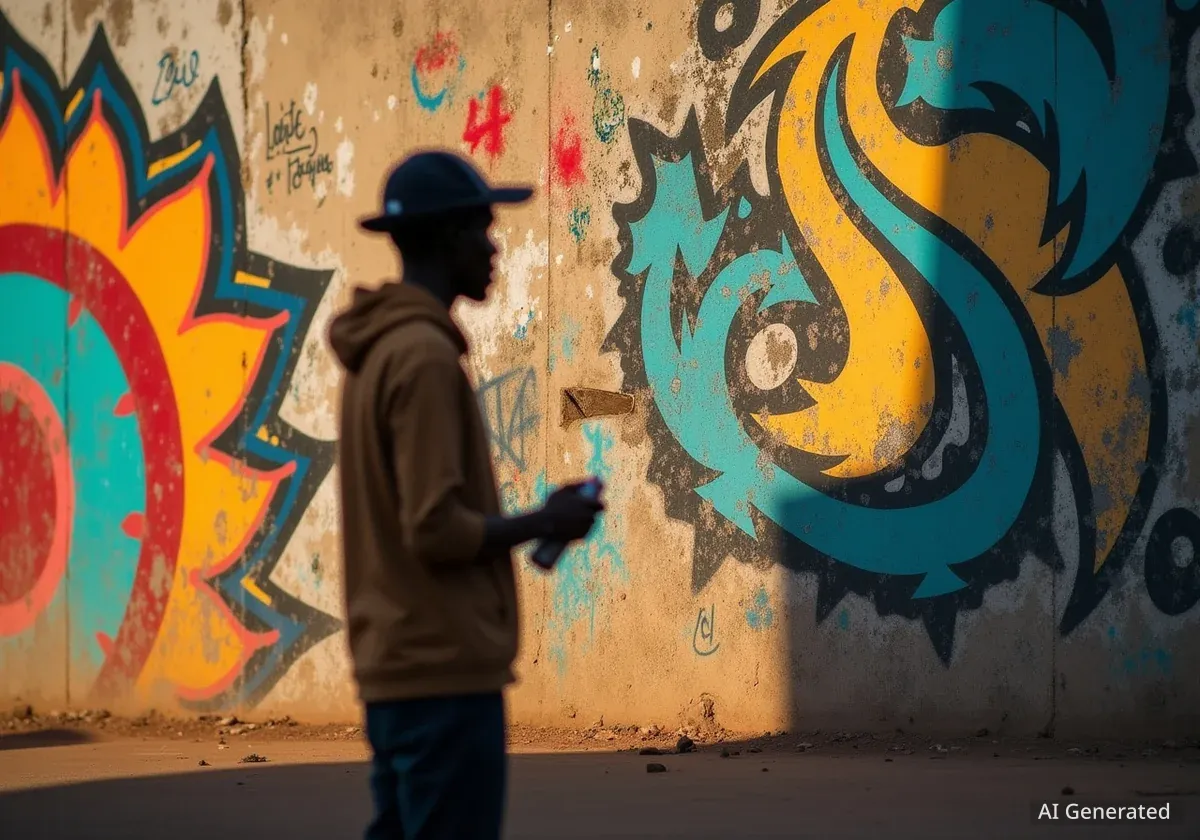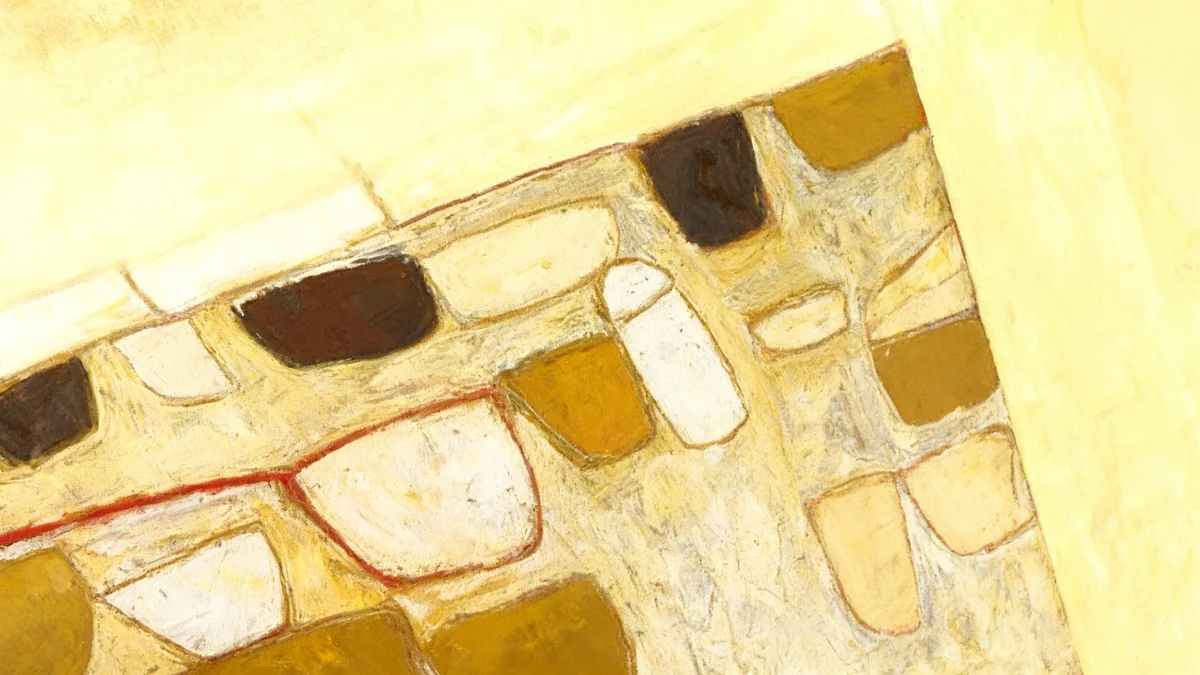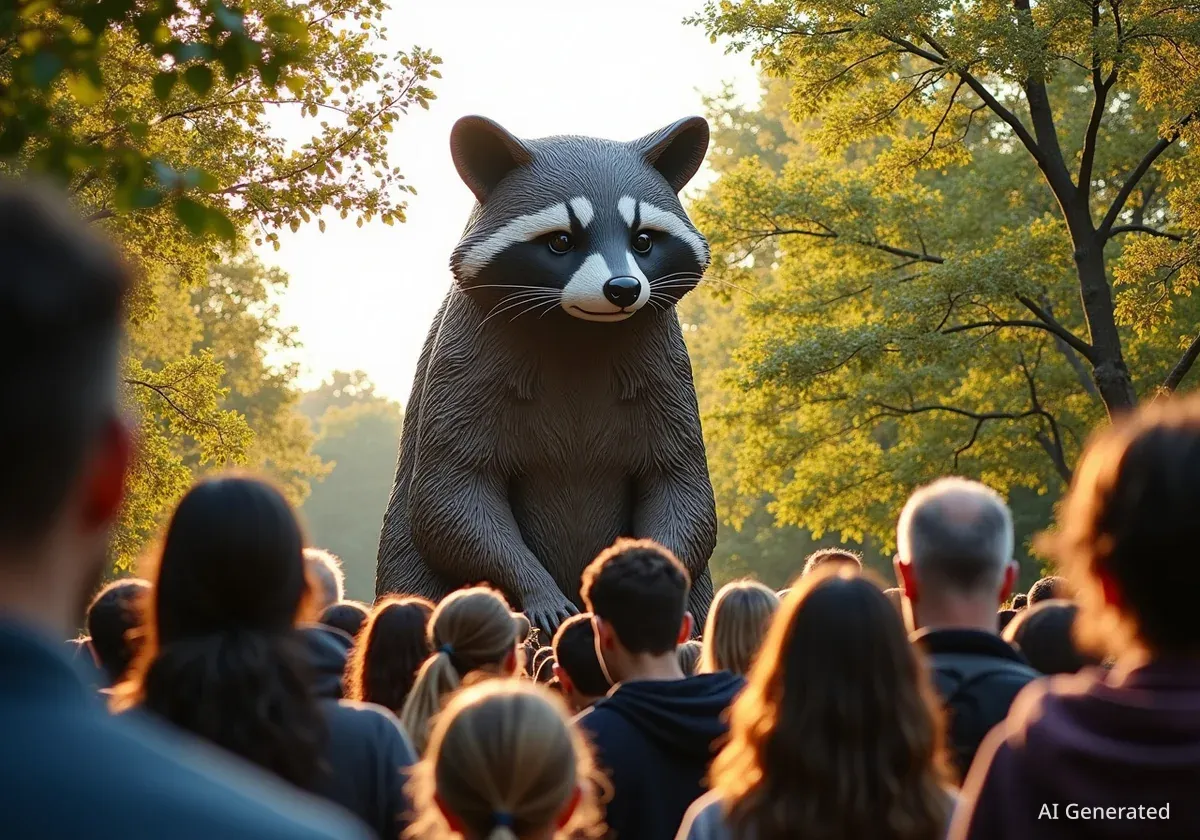The bustling streets of Conakry, Guinea, are undergoing a vibrant transformation. Once-plain city walls are now canvases for large-scale murals, part of a growing street art movement in West Africa. At the forefront of this change is Omar Diaw, a Senegalese artist whose work is not only beautifying the capital but also shifting public perception of graffiti from a nuisance to a celebrated art form.
Less than a decade ago, graffiti was widely considered vandalism in the city. Today, residents and commuters frequently stop to admire colorful depictions of cultural icons, national leaders, and scenes of daily life, turning public spaces into open-air galleries.
Key Takeaways
- Senegalese artist Omar Diaw is leading a street art movement in Conakry, Guinea.
- The initiative aims to change the view of graffiti from vandalism to a respected form of public art.
- Murals feature prominent figures like President Mamadi Doumbouya and Haile Selassie, alongside cultural scenes.
- The art is transforming public spaces and engaging the local community, sparking conversations and civic pride.
From Defacement to Public Dialogue
The journey to acceptance for street art in Conakry has been a deliberate one. Omar Diaw recognized that to introduce graffiti as a legitimate art form, he first needed to build a bridge with the community. He began his work not with abstract tags, but with public awareness murals designed to resonate with the city's inhabitants.
This strategic approach has paid off. Where spray paint might once have been met with suspicion, it now draws curious and appreciative crowds. The transformation is visible along major thoroughfares, where long stretches of concrete have been claimed by art. Motorcyclists slow down, pedestrians pause, and a new dialogue between the city and its people has begun.
The Rise of West African Street Art
Conakry's burgeoning scene is part of a wider trend across West Africa. In cities like Dakar, Senegal, and Accra, Ghana, street art festivals and collectives have emerged, using public walls to address social issues, celebrate heritage, and provide opportunities for young artists. This movement reclaims urban spaces for creative expression.
An Artist's Vision for the City
Omar Diaw's portfolio on the streets of Conakry is as diverse as the city itself. His subjects are carefully chosen to connect with a broad audience, blending political figures with cultural and historical icons. This intentional selection helps legitimize the art form in the eyes of the public.
One of his most prominent recent works is a striking portrait of Guinea’s President, Mamadi Doumbouya. The mural has become a landmark, with people often stopping to watch Diaw as he adds the finishing touches. This act of painting in public demystifies the process and turns the creation of art into a shared community event.
"When you paint in the street, the art belongs to everyone," Diaw has previously stated, explaining his philosophy of making art accessible and integrated into the fabric of daily life.
A Gallery Without Walls
Walking or driving through Conakry now offers a dynamic visual experience. Diaw's murals serve as powerful focal points in the urban landscape. His works include:
- Portraits of Power: Images of President Doumbouya and Ethiopian emperor Haile Selassie offer commentary on leadership and African history.
- Cultural Celebrations: Vibrant scenes of traditional dancers in motion pay homage to Guinea's rich cultural heritage.
- Empowering Figures: A large mural depicting a powerful woman has become a popular sight, celebrating the role of women in society.
- Whimsical Scenes: A joyful painting of a smiling man with an elephant introduces a sense of wonder and warmth to the daily commute.
Each piece is more than just decoration; it is a statement. The murals are strategically placed to interact with the city's rhythm, catching the eye of street vendors, commuters on motorbikes, and passengers in cars driving past.
Public Engagement: The creation of the murals is often a public spectacle. Passersby frequently stop to watch Omar Diaw at work, asking questions and taking photographs, turning the artistic process into a live performance.
The Impact on Conakry's Streets
The effect of this artistic intervention is palpable. The murals have injected color and identity into neighborhoods, fostering a sense of local pride. They serve as landmarks and meeting points, weaving themselves into the social and physical map of the city.
For many residents, the art has fundamentally changed their relationship with their environment. A dull wall they might have ignored for years is now a source of beauty and conversation. This shift demonstrates the power of public art to not only improve aesthetics but also to strengthen community bonds.
As Diaw continues to paint, he is not just adding color to concrete; he is helping to write a new chapter in Conakry's cultural story. His work proves that a spray can, in the right hands, can be a tool for profound urban and social change, transforming the street from a simple public space into a platform for identity, expression, and connection.




